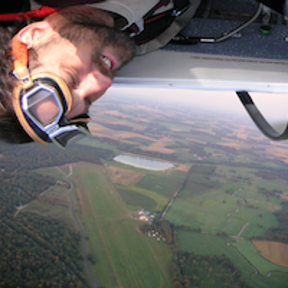Welcome to the Onshape forum! Ask questions and join in the discussions about everything Onshape.
First time visiting? Here are some places to start:- Looking for a certain topic? Check out the categories filter or use Search (upper right).
- Need support? Ask a question to our Community Support category.
- Please submit support tickets for bugs but you can request improvements in the Product Feedback category.
- Be respectful, on topic and if you see a problem, Flag it.
If you would like to contact our Community Manager personally, feel free to send a private message or an email.
Construction of toy ladder - mating rung to rails?
 greg_arnoldussen
Member Posts: 7 ✭
greg_arnoldussen
Member Posts: 7 ✭
Three days into learning Onshape from scratch. It's amazing software. This is my first post and I have already learned a lot but there gets to a point where I need some advice. I'm making a toy ladder to replace an old one which is designed to be inserted into the grooves of a physical vintage toy fire truck ladder crane. I want to send it off to get it printed. I have sketched three parts - a left and right rail and multiple rungs which I produced all at once using linear pattern, so they are all identical. In Assembly mode I want to do these things:
- Make sure the collection of rungs are all aligned centrally in terms of each rung being vertically centered with respect to the inside of each rail if you could picture the ladder sitting flat and the ground (the rungs are slightly smaller in width than the rails).
- Ensure the left and right rails are 100% square to each other.
- Mate the rungs to both rails.
The current Assembly view shows the ladder as if it is finished but as you can see it is not mated and I don't know how to align everything. One area which I am finding difficult is knowing how to keep all the parts aligned to each other and I guess this will just come with more practice.
I am open to constructive criticism and would like to know if I've gone about things properly, up to this point. I thought if I can learn this properly then I'll get a printer of my own. Thank-you.
https://cad.onshape.com/documents/319ab14f93be0ad5123820a3/w/951c8816653acfefa8017185/e/084ab8514e8f589df13396dc?renderMode=0&uiState=677a3f2cecc037571c74a7e2
Best Answer
-
 martin_kopplow
Member Posts: 1,065 PRO
martin_kopplow
Member Posts: 1,065 PRO
I've just looked into your document.
- If you're going to print it in one piece, you could build it in one part studio, even boolean unite everything, and don't need the assembly.
- If it is going to be built of seperately printed rails and rungs, you only need to design one rung and one rail, then insert multiple instances of them in the assembly, pattern and mate them.
So, question is: What do you want to do, or bit more nerdy: What is your design intent?
This is the assembly variant:
First rail is fixed to origin. First rung is fixed to first rail. Second rail is an instance of first rail rotated* 180°, then fixed to first rung. Last, first rung is linear patterned x17 along edge of first rail.
*In this case they're identical, else I'd have used a rail mirrored in the part studio
0

Answers
I've just looked into your document.
So, question is: What do you want to do, or bit more nerdy: What is your design intent?
This is the assembly variant:
https://cad.onshape.com/documents/739312e3f5c188f904101f36/w/4c90d70b130288e1ce0cfaa8/e/9958991a788c62b9abe78c5b?renderMode=0&uiState=677a7c9cc8800f5b9b686e57
First rail is fixed to origin. First rung is fixed to first rail. Second rail is an instance of first rail rotated* 180°, then fixed to first rung. Last, first rung is linear patterned x17 along edge of first rail.
*In this case they're identical, else I'd have used a rail mirrored in the part studio
Thanks for looking into my project. Yes, I wanted to print the ladder in one piece, not separate components.
I'll take a look in greater detail later on. Thanks again.
Hi Martin. I managed to reproduce your steps successfully, thanks again. Very clear to follow.
One thing that I may have been doing wrong initially was using mate connector icon on each surface and then the fastened mate icon. But if you just use fastened mate it seems to incorporate the connectors automatically.
I gave the boolean operations in Part Studio a go, that also makes sense to me now, instead of using fastening.
Also, I understand it is important to fix the first part in space, but is it necessary to fasten it to the origin - or is this just a nice way of keeping things central and on a flat plane?
I look forward to more sketching now that I've got a little more knowledge up my sleeve. Cheers.